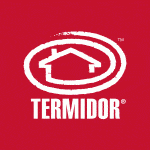The toughest challenges for your property are not always apparent to the naked eye. This applies not just to inevitable natural phenomenon or anything coinciding legal matters, but to groups of pests such as termite colonies as well. Termite protection is usually done in 2 ways: chemical barrier and baiting and monitoring. While chemical barriers are thought to be the quickest and easiest way to protect against termites, most people opt for the baiting and monitoring technique as it gets rid of termite colonies in a longer amount of time.
To help you understand the difference between the two procedures better, here are condensed strategies implemented for each:
Chemical Barriers
Before the use of chemical barriers outside your property, treating any active termite infestation with chemicals inside is usually the top priority. Once the termite infestation inside is treated, pest control experts then make use of chemicals that can be injected into the soil around the property as well as holes drilled into parts of concrete where the colony dwells. This is done to chemically treat the soil underneath where termites thrive. Some may even install a reticulation pipe for future chemical impregnation top ups on your property’s trenched areas. Chemical barriers are just the first step to ensuring maximum termite protection, which is why baiting and monitoring is usually performed as an additional measure after the chemical injection.
Baiting and monitoring
Termite pest controllers have long perfected the method of knowing how termites think, act, and breed. Because of this, they’ve developed a method to eradicate not just the active termites in 1 infested location, but to wipe out the whole colony instead. Experts first do initial inspection around the property to see what they’re up against. Once they’ve mapped out the infested areas, termite baiting stations containing the termites’ preferred food will be set up across different parts of the property. Once termites have fed on the bait, they will then take it back to their colony, infecting other termites, ensuring fast and easy elimination. The whole procedure will take as long as 3 months with inspections every 4 to 6 weeks to map out the extermination progress.
Got a termite infestation around your property that you need professional help with? Ask help from the termite experts at Picton Pest Control today and let us help evaluate and solve any termite problems today!



